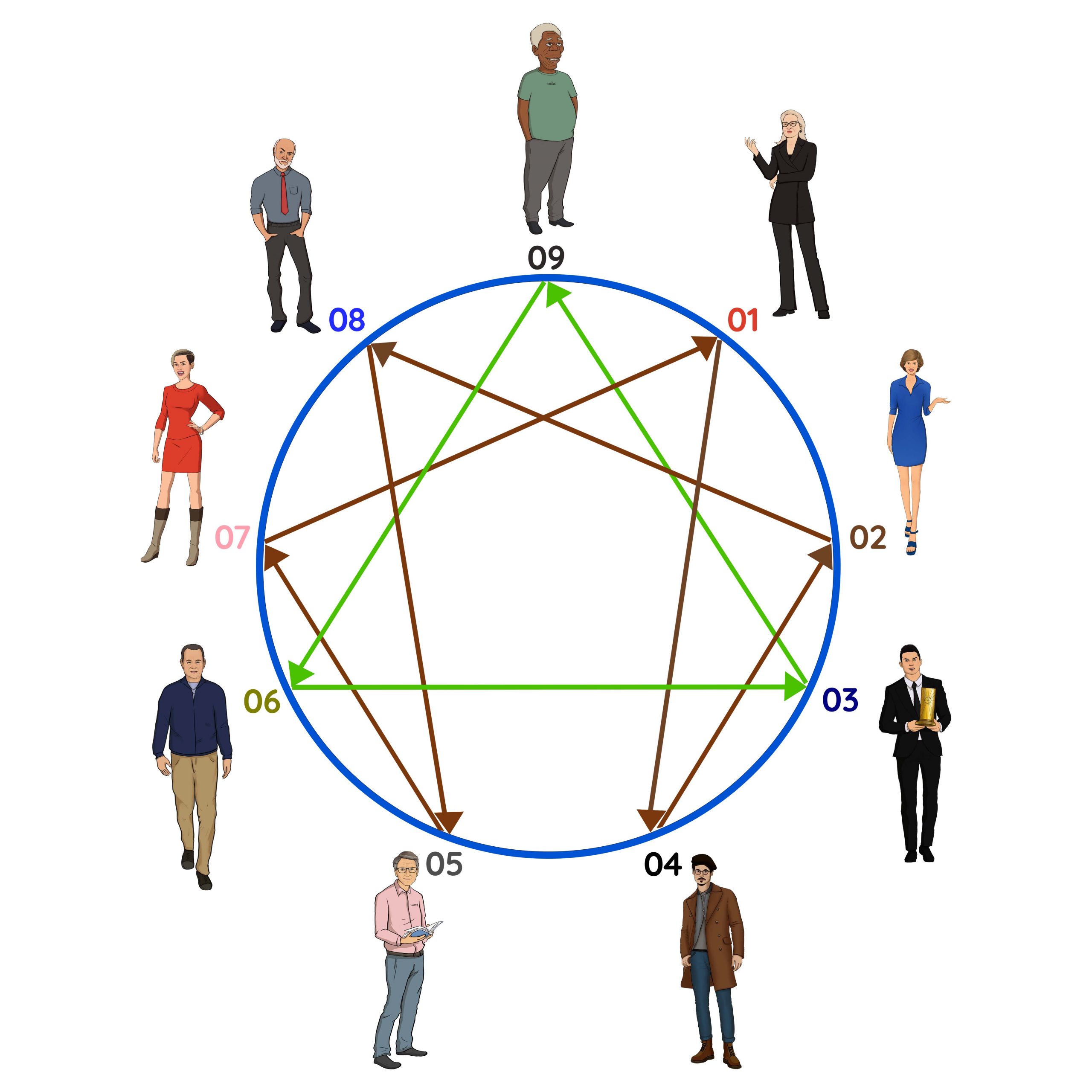
The enneagram
The Enneagram is an ancient system that facilitates self-awareness and allows us to feel compassion for others through a map that directs us to the path of growth, whether on a personal, relational, professional or spiritual level.
This map allows us to pulsate between our ego and essence with awareness, thus achieving a deeper contact with ourselves with greater personal power and also a truer contact with others, creating healthier and lasting close bonds.
The History of the Enneagram
It is believed that this symbol was created through Mathematical Laws (The Law of One, the Law of Three and the Law of Seven) about 4500 years ago, in Alexandria where the sages of various cultures, including Pythagoras, gathered.
The law of the One (represented by the circle) is the Origin and Source of everything. It is the totality and the Absolute, where everything is One, the part is in the whole and the whole is in the part, what is above is equal to what is below.
The Law of Three (represented by the triangle), represents the beginning, the middle and the end. Represents the structure; there are always three forces, very different, but which together produce balance and harmony. The active force or action, the passive force or reaction and the mediating or neutralizing force. In the Christian religion we have the Father, the Son and the Holy Spirit. In Hindu religion we have Brahma, Vishnu and Shiva. In physics we have protons, neutrons and electrons.
The Law of Seven or the Law of Octaves (represented by the hexade) represents the different states, which are required to complete an action. It explains the process of evolution and this law is even found in the Lunar Cycles. It is also verified in the seven musical notes, seven days of the week, seven colors of the rainbow or by mathematics (1÷7=0.14285714…).
According to Gurdjieff, who introduced the Enneagram to the West in the 20th century. XX, the Enneagram is “a symbol of everything and everything”. It explains the processes of the universe and of all things.
Oscar Ichazo and Cláudio Naranjo created the Enneagram of personalities, each with their mental, emotional and instinctive tendencies that are reflected in a motivation and a “being” in the world, which can be with different levels of maturity. Later, they talk about our emotional addictions (passions), limited vision of seeing the world (fixations) and also about expanded states of consciousness (virtues and sacred ideas).
How does the Enneagram work?
The Enneagram is made up of 9 numbers, that is, 9 distinct personality points. We all have a little bit of everyone, the whole is part of our being, but there tends to be a personality type that dominates. Unconsciously this is established according to the relationship that the baby perceives with the father and mother figures.
The Enneagram proposes two paths of personal growth and transformation: the path of wings and the path of arrows. (1-7-5-8-2-4-1) and (9-3-6-9). Despite having a dominant personality, the enneagram is not static, it has movement through arrows and wings, which causes the personality to balance or distort.
The challenge is to get out of the stagnation of our type and regain the flow, to be able to move through the other points of the Enneagram.
The different types of Enneagram
Types 8, 9, and 1 are practical energy personalities . They have a feeling of insignificance that leads to Wrath. The lack of self-worth leads to the search for recognition and external appreciation.
Type 8 compensates for this feeling of insignificance by asserting themselves and showing strength.
Type 9 compensates for feelings of insignificance by anesthetizing and shutting down.
Type 1 compensates for this feeling by wanting to be correct and perfect.
Types 2, 3, and 4 are emotional energy personalities . They have a feeling of being unloved that leads to shame. The affective lack leads to the search for attention, love, affection and external acceptance.
Type 2 compensates for this feeling by pleasing and helpful
Type 3 compensates for feeling unloved by being successful and efficient.
Type 4 compensates for feeling unloved by having strong emotions.
Types 5, 6 and 7 are mental energy personalities . They have a feeling of helplessness that leads to fear. The lack of self-confidence leads to the search for external security, supports and canes.
Type 5 compensates for the feeling of helplessness by trying to know, know, and understand.
Type 6 compensates for feelings of inadequacy by designing negative scenarios to prepare in the event of misfortune.
Type 7 compensates for this feeling by rationalizing and not thinking about setbacks, but about pleasure.

What is the Enneagram for?
Greater self-knowledge and realize your automatic pattern.
Personal growth and development.
Have a greater understanding of those around us.
Better interpersonal communication.
Create successful relationships at work and in other areas of life.
Team building and leadership development.
Career guidance and advice, better understanding of your strengths and weaknesses.
Get in touch with your spirituality and your essence.
Type 5 – the observant / Type 6 – the doubtful / Type 7 – the enthusiastic / Type 8 – the controlling / Type 9 – the mediator

